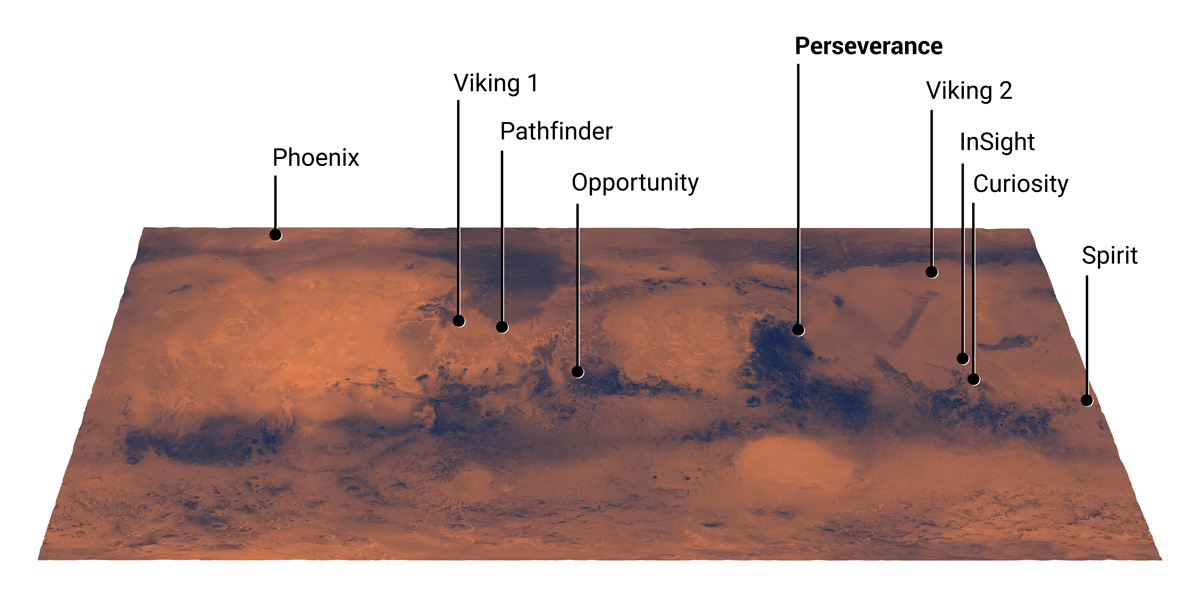NASA chose Jezero Crater as the landing site for the Perseverance Rover.
Scientists believe the site was once flooded with water and was home to an ancient river delta.
The
method
of selecting
the landing site involved a mixture of mission team members and scientists worldwide, who carefully examined
quite
60
candidate locations on Mars.
After the exhaustive five-year study of potential sites, each with its unique
characteristics and appeal, Jezero was the one.

Jezero Crater tells a story of the on-again, off-again nature of the wet past of Mars. 3.5 billion years
ago, river
channels spilt over the C wall and created a lake. The lake's formation is evidence that water carried
clay
minerals from the encompassing area into the C lake.
Conceivably, microbial life could have lived in Jezero during one or more of those wet times. If this is
true then,
we
may find signs of their remains in lakebed or shoreline sediments.
Scientists will study how the region formed and evolved, seek signs of past life, and collect Mars rock and
soil
samples
that may preserve these signs.
The complex landing sequence and targeting a location like Jezero Crater have only been possible due to new
landing
technologies referred to as Range Trigger and Terrain-Relative Navigation.
But the safe landing will just be the start of the primary leg of a mission as Perseverance rover’s job is
to
collect special rocks, known to preserve signs of life over time, that would be returned to Earth by a
future Nasa
mission.
